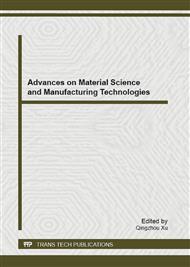p.340
p.344
p.348
p.352
p.356
p.360
p.364
p.370
p.375
Monitoring of Efficiency and NOx Emissions at a Coal-Fired Utility Boiler
Abstract:
In order to improve boiler efficiency and to reduce the NOx emission of a coal-fired utility boiler using combustion optimization, a hybrid model was proposed to monitor boiler efficiency and NOx emissions. In this model, operational parameters were inputs, and its features were selected by kernel principal component analysis (KPCA). The relationships between the selected features and combustion products such as NOx emissions, unburned carbon and oxygen content in flue gas were mapped by -support vector regression ( -SVR), and then boiler efficiency was calculated by analytical model. The parameters of hybrid model were determined by grid search and 5-fold cross validation. The predicted results indicate that the presented hybrid model can monitor both efficiency and NOx emissions of coal-fired utility boiler, and the predicted performance of KPCA- -SVR model is more superior, comparing the other two models.
Info:
Periodical:
Pages:
360-363
Citation:
Online since:
December 2012
Authors:
Keywords:
Price:
Сopyright:
© 2013 Trans Tech Publications Ltd. All Rights Reserved
Share:
Citation:


